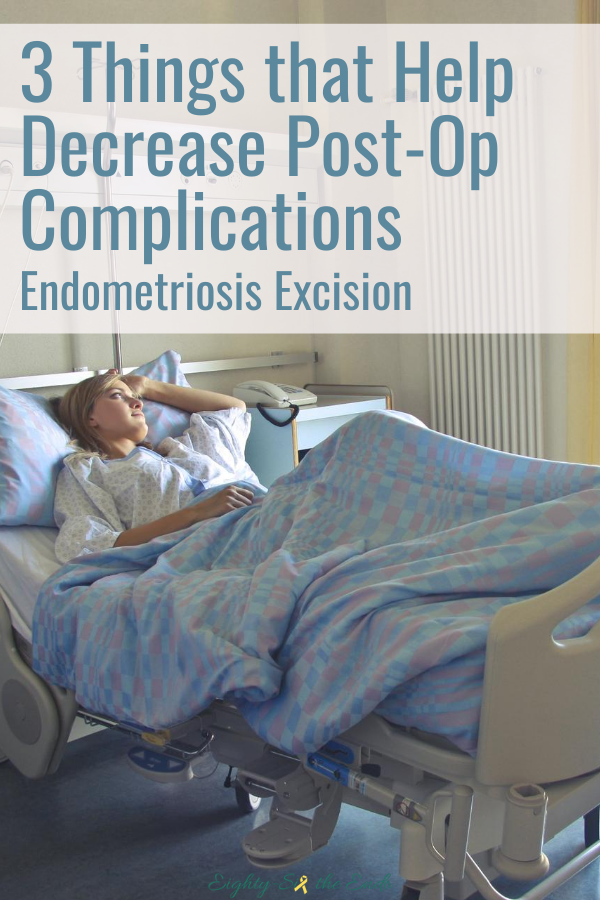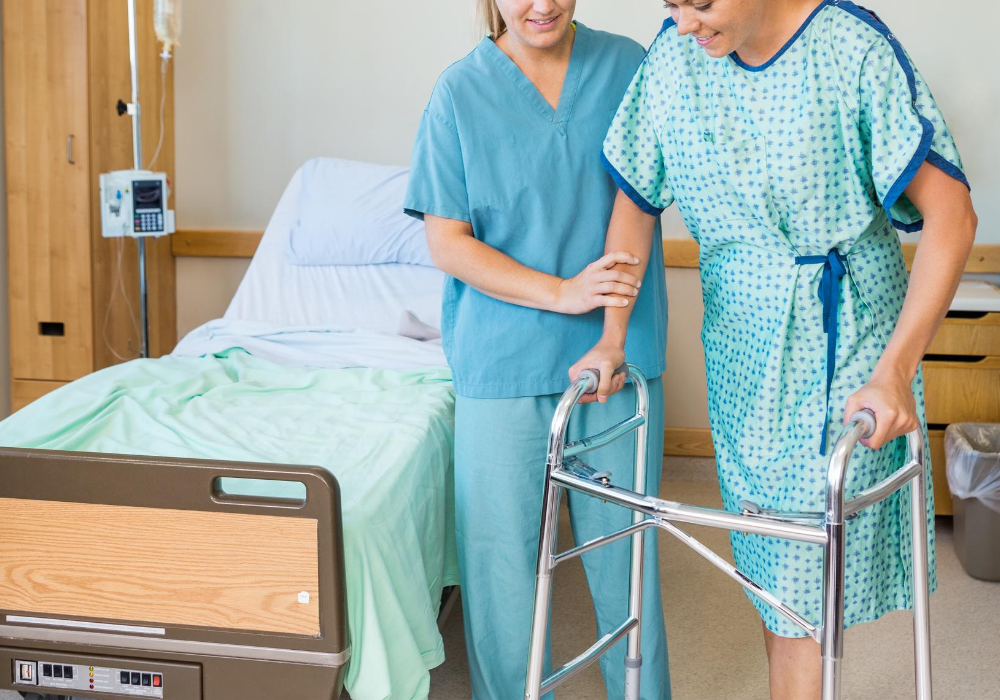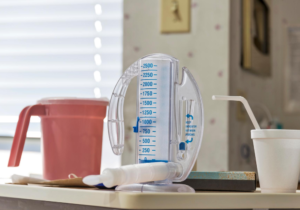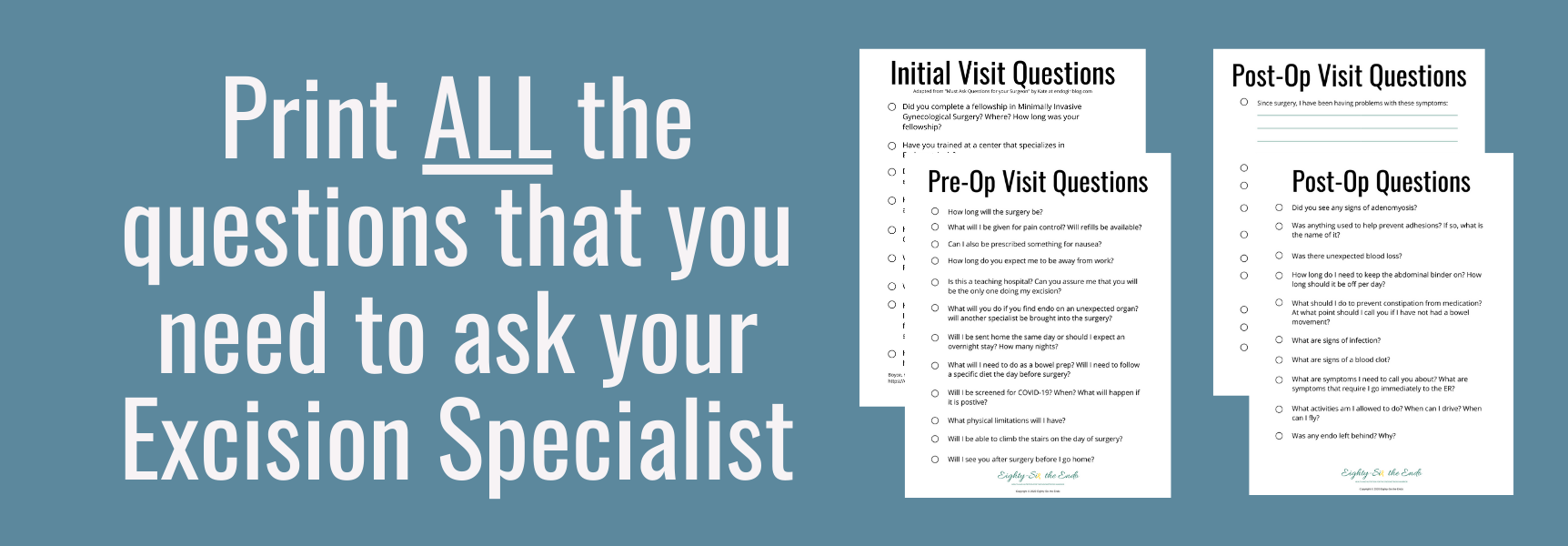Post-op complications are something many endo warriors are afraid of – understandably. The journey to proper surgical excision of endometriosis is hard enough, so why wouldn’t you be fearful of the complications that can occur after having surgery. Especially since discharge education is not always entirely comprehensive, or you may be too drowsy to take in the discharge teaching. So, today I want to discuss the 3 things that help decrease post-op complications.
To be clear, this post is not about the complications that can happen during surgery, as that is something your doctor should be going through with you as a part of informed consent. Instead this post is about the interventions you can start doing as soon as you get out of surgery to prevent complications that come from having surgery.
I’m sharing this with you, because I have first-hand experience in medical-surgical nursing, and I have seen countless patients who are entirely unaware of the complications that can happen. Yes, you may be told a list of symptoms that you need to immediately call your surgeon about or reasons to go to the ER, but maybe they didn’t go over the reasons why these symptoms can be worrisome. And that is why I want to be sure you are armed with the knowledge.
This is not to scare you or make you second guess your decision to have surgical excision. It is only meant to help educate you on 3 things that help decrease post-op complications.

1. Get Up and Walk!
I know this sounds incredibly difficult when you are amid post-op pain, and that is because it is. Walking on the day of or the days immediately following surgery is HARD. I know. I’ve been through it, but you HAVE TO get up.
Not only does this help reduce the chance of muscle loss during recovery, but it also helps prevent DVT’s (deep-vein thrombosis), which are basically blood clots. DVT’s are a very real risk for any surgery and if they are not caught in time, or have been left untreated, the blood clot can break loose and lead to Pulmonary Embolism – which can cause death.
Like I said, I’m not here to scare you, but I have found in my nursing career that being blunt, straightforward, and honest is what really makes patients realize how important some interventions are. And walking is such an easy intervention to help prevent DVT’s.
Studies also show that the earlier you start walking, the better overall outcome you will have during recovery. This does not mean you have to walk laps around the block. It just means you should be walking for a total of at least 30 minutes a day; and you can break this up into 10-minute intervals throughout the day.
If you’re really finding it difficult to walk, try taking your pain meds an hour before you plan to get up. And if your pain meds are not effectively controlling your pain, call your doctor. You may also find benefits in investing in mobility aids, which I talk about in 10 Must Have for Excision Surgery.
Deep-Vein Thrombosis
- Usually form in the legs but can form in any deep vein.
- Signs/symptoms to look for:
- Localized pain to site, usually feels like soreness or cramps.
- Localized swelling to site
- Localized Redness or discoloration to skin
- Localized Warmth to site
- Call your doctor immediately if you have the above signs or symptoms.
- Go to your closes ER if you feel sudden shortness of breath and chest pain.

2. Breathe. Breathe. Breathe.
I’m not talking about the deep breathing that can calm your nervous system, although that is helpful too. What I want you to focus on preventing is pneumonia, a very real and serious complication post-surgery that can lead to life-threatening complications.
Pneumonia is an infection that fills the air-sacs of the lungs with fluid. It usually happens after surgery because the pain and rest can lead to constant shallow breathing. Meaning, you are not filling and moving the lower lobes of the lungs. But it can be prevented!
 A common device given to patients to help prevent pneumonia is the incentive spirometer. It is a tool that helps patients really open and “work-out” the lungs. The best way to really see benefits from using the incentive spirometer is to focus on using it 10 times, every hour, while awake; or you should go by your doctor’s recommendations. I have attached a video below with how to use it.
A common device given to patients to help prevent pneumonia is the incentive spirometer. It is a tool that helps patients really open and “work-out” the lungs. The best way to really see benefits from using the incentive spirometer is to focus on using it 10 times, every hour, while awake; or you should go by your doctor’s recommendations. I have attached a video below with how to use it.
In my case, I was not given an incentive spirometer at discharge, so instead I focused on taking 10 deep breaths every hour during the first 10-14 days post-surgery. Thankfully, recent studies show that deep breathing practices are just as preventive as using the incentive spirometer.
Pneumonia
- Signs/Symptoms to look for:
- Fever
- Chills
- Cough, usually with phlegm
- Shortness of breath
- Wheezing
- Chest pain when you breath or cough

3. Follow Your Surgeon’s Post-Op Instructions
This may seem obvious, but it’s worth mentioning. Your surgeon knows your medical history, and individual risks, so you should always follow their recommendations . . . including the restrictions they give you.
Some patients feel like a whole new person immediately after excision, and although this was my not my experience, I feel I must discuss it. Even if you feel like you have the energy to complete certain activities of daily living, like vacuuming or taking out the trash, you should still avoid them. If you do not follow the restrictions set out by your surgeon, you run the risk of prolonging your recovery and even having to be readmitted for complications.
For instance, lifting over the typical 10 lb. restriction can lead to internal and external straining and tearing. This, of course, means that your surgical sites may open (dehisce), or you may develop internal bleeding from tearing.
Summary
Again, I don’t tell you these things to keep your from taking the next step towards healing. Laparoscopic Excision by a skilled expert in excision remains the gold standard in endometriosis care. It has the potential to give you your life back!
I share these interventions with you so that you can be armed with information to help prevent potential complications. If you implement them, you will be decreasing your chances of developing post-surgical complications. In the end, they do not guarantee that you will not develop these complications, and you should talk to your physician about these interventions before making any changes.

- Nelson, G., Altman, A. D., Nick, A., Meyer, L. A., Ramirez, P. T., Achtari, C., Antrobus, J., Huang, J., Scott, M., Wijk, L., Acheson, N., Ljungqvist, O., & Dowdy, S. C. (2016). Guidelines for postoperative care in gynecologic/oncology surgery: Enhanced Recovery After Surgery (ERAS®) Society recommendations–Part II. Gynecologic oncology, 140(2), 323–332. https://doi.org/10.1016/j.ygyno.2015.12.019
- Adams, D (2018). Is there any incentive? A review on the use of incentive spirometry in postoperative abdominal surgery patients. Canadian Journal of Respiratory Therapy, 54(2), 50-50. Retrieved from https://web.b.ebscohost.com/abstract?direct=true&profile=ehost&scope=site&authtype=crawler&jrnl=12059838&AN=130767009&h=1nAlqeYZDH9c1TXOpodeQtH0fjjkAg%2fyBIukQxRZUbnpjVPlxO865aJrB75T9DGUVE865vOGUUlOHzYgYd9S3g%3d%3d&crl=c&resultNs=AdminWebAuth&resultLocal=ErrCrlNotAuth&crlhashurl=login.aspx%3fdirect%3dtrue%26profile%3dehost%26scope%3dsite%26authtype%3dcrawler%26jrnl%3d12059838%26AN%3d130767009


